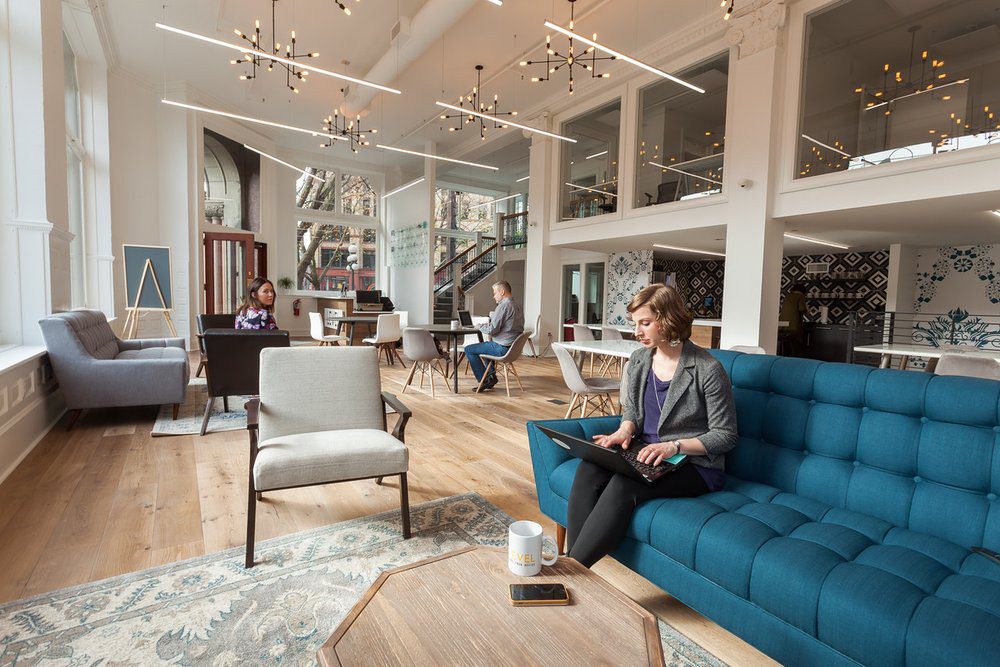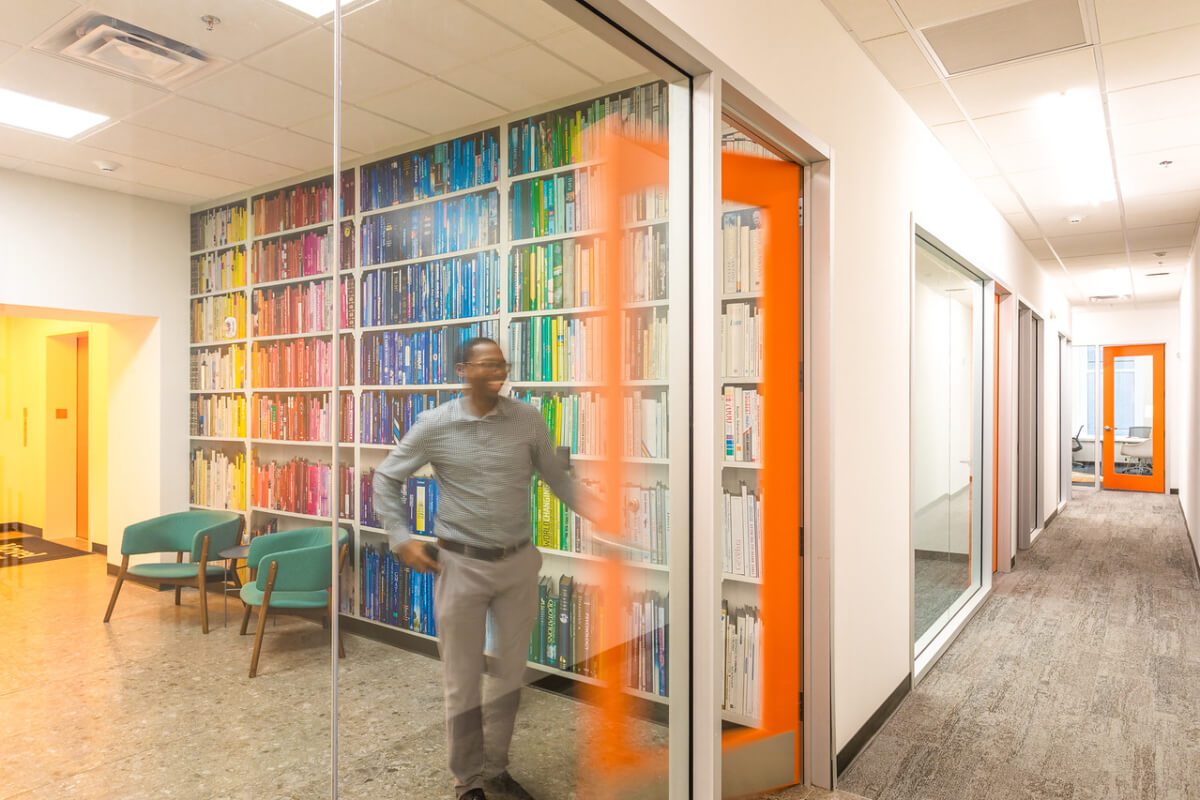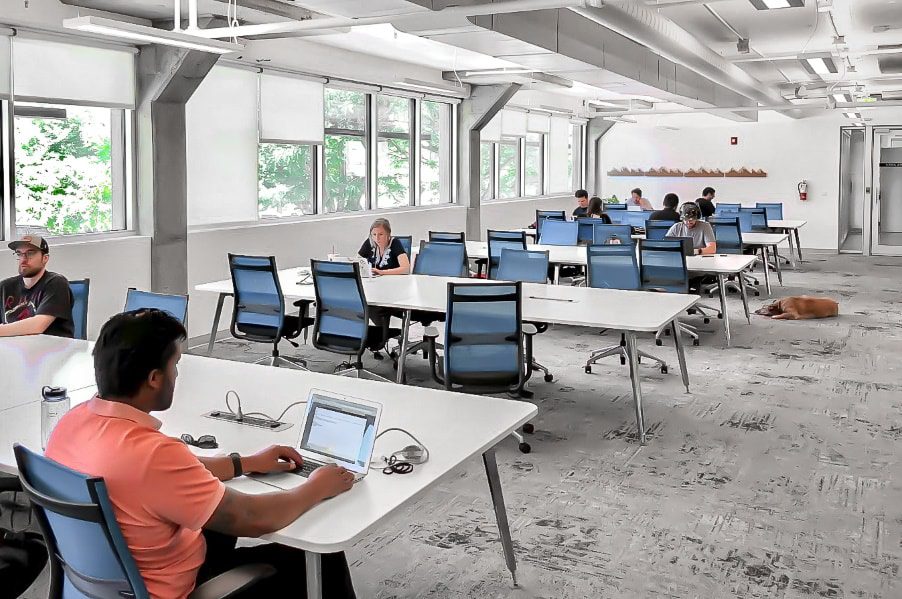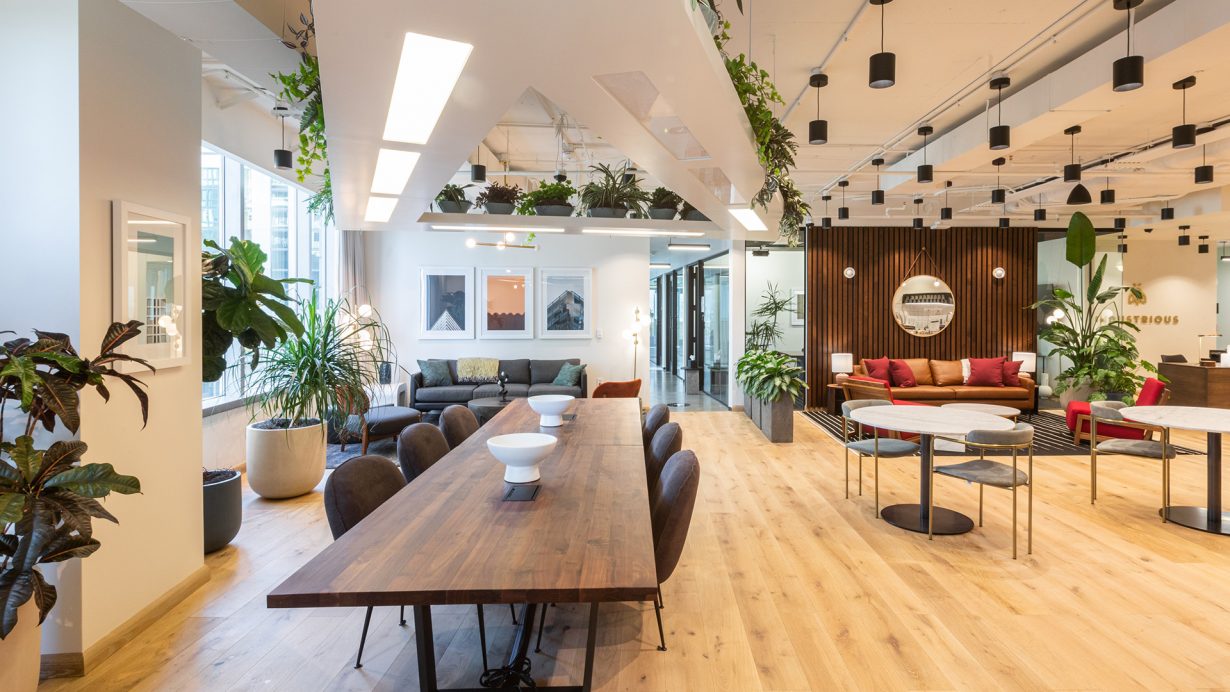Choosing an office space is a difficult task, but there has never been a better moment to do it. Many businesses are shifting to “flexible office space” these days, which are spaces that may be leased for shorter periods of time and can scale up or down as your company develops and evolves. Coworking spaces and serviced offices are two of the most popular types of “flexible office space.”

These two solutions may appear to be fairly similar at first sight, but there are some significant distinctions that could affect how you manage your business. The key to finding the ideal modern office space for you is to understand these differences and know what your business needs are.
So, what’s the difference between the two? And how can you know which is the best option for your company? We’ve broken it down for you:
What is Serviced Office Space?

A facilities management company leases out office space as a serviced office. Managed offices, executive offices, and business centers are all terms used to describe serviced office space. Corporate organizations, as well as more established small firms, usually call them home. Depending on their size, a corporation can hire a private office, an executive office suite, an entire floor, or many floors of a building. Unlike regular office leases, a serviced office is typically a fully equipped office suite that is ready to use when you arrive. You have the choice of getting a Private Office, Co-Working Space or Hot Desk.
Amenities in serviced office spaces:
- Utilities, phones, and high-speed internet
- Admin support and reception teams
- Communal spaces and private areas
- Cleaning and maintenance
- Security
- Postal services
- Office equipment
- Furniture
- Community perks and benefits, including preferential rates at local bars, cafés, restaurants and health clubs
What is a Coworking Space?

When it comes to workplace workspaces, coworking is the “new kid on the block.” For freelancers, entrepreneurs, startups, and small enterprises, coworking provides flexible workspaces. There are many different types of space to rent in a coworking space, including:
- A single desk in a shared open-plan workspace, usually on a first-come, first-served basis.
- Dedicated workstations for you and your colleagues
- Individual or group private offices
Many of the same benefits as serviced offices are available in coworking spaces, but they have limits. The majority of business centers will simply rent you a desk for a short or long period of time, but they may not be able to provide private offices or conference spaces.
There are also some disadvantages when it comes to coworking spaces. They might be quite social, yet the absence of privacy can be frustrating for lone workers. It’s also possible that you’ll have to wait for access to workplace necessities like printers or meeting spaces.
Coworking facilities include:
- Bookable meeting and board rooms
- Communal spaces, such as kitchens, lounges, and recreational spaces
- Event spaces
- Community managers ready to assist with any troubleshooting issues
What are the main differences between serviced offices and coworking spaces?

1. Workspace Layout
Coworking spaces typically have an open floor layout, allowing for easy collaboration and sharing of resources. They offer a more “lifestyle” vibe to them, with features and luxuries like pool tables, bars, and even sleep rooms. You can rent by the desk, whether it’s a “hot desk” or a “dedicated desk,” or you can rent the entire suite for your complete staff. Because the leases are flexible, it’s simple to scale up or down as your company grows.
The majority of serviced offices are more divided than the usual coworking space. Individual “cubicle style” desks, private offices and suites for individuals or teams are common in these spaces. Hot desking and dedicated desks are available in some serviced offices, such as Workspace at Keppel Towers. They have certain common facilities, such as conference rooms, boardrooms, and pantry areas, just like coworking spaces.
2. Office Design

The environment in coworking spaces is often more relaxed and casual. As previously said, they are typically designed with an open floor plan in mind. The design will differ from space to space, but you can expect modern, creatively inspired facilities with their own unique twists based on the community’s personality.
The style and feel of serviced offices is more corporate and professional. In comparison to a coworking environment, the mood and colors will be much more subdued, and the design will not be conducive to collaboration. For some, this may be beneficial because it allows for more independent, silent, head-down work.
3. Office Culture

Many coworking spaces, which are frequented by entrepreneurs and freelancers, have a culture that exudes the entrepreneurial spirit. A community manager is frequently, if not always, employed by these workspaces and is in charge of onboarding new members, preserving the space’s culture, and encouraging member engagement. They may also conduct regular activities such as community luncheons or networking cocktails on a weekly basis. It’s worth noting that coworking comes in a variety of shapes and sizes, and that certain locations are better suited for specific businesses or industries than others.
Businesses of different sizes use serviced offices, ranging from one to two-person teams to groups of 20 or more. Corporations frequently use these rooms for short-term projects, as well as for office relocation or remodeling. There is no distinct culture facilitated by a community manager or member, unlike coworking places.
4. The Cost

In any company choice, cost is a critical consideration. Depending on your location and requirements, the cost of an office space will vary greatly.
The cost of a serviced office is more than that of a regular office. You’re paying for full-time access to an office space as well as the serviced office’s “all-inclusive” experience. In most cases, you’ll be on a fixed-term contract, which means you’ll be committed to these charges for at least 12 months.
The cost of coworking spaces varies as well. Some places cater to those on a budget, while others have a more “exclusive” vibe. The cost of coworking will also be determined by your requirements. Without a question, coworking is the more cost-effective solution. Options like hourly and daily charges are prevalent. Even with longer-term leases, it’s usually simple to alter your mind or quit entirely if your financial situation changes.
Which Office Space is Right For You?

It’s critical to know exactly what you need ahead of time in order to make the greatest option for your office space rental. Asking yourself the following questions is the most effective approach to do so:
How frequently will you need to visit the office?
If you only require an office for one or two days a week, co-working spaces are a good option because you only pay for the days you use. If you’ll be working longer hours, though, a serviced office space’s available packages can be worth considering.
What kind of office facilities do you often use?
Your needs for office space will vary depending on the type of business you run. If you’re thinking about renting a coworking space or a serviced office, make sure you’ll have access to the services and equipment you require when you need them.
Knowing what you need from your office is the first step toward making a better workspace decision. We offer a variety of flexible options at Clockwise, making it easier than ever to have the greatest workspace without the hassle of traditional office rental.

Enterprise software development experience. More recently in positions including CTO, Lead Developer and Head of Product in Australia. Deep expertise in property and legal technology in Australia with a specialty in lead generation and tech scalability across Asia-Pacific.